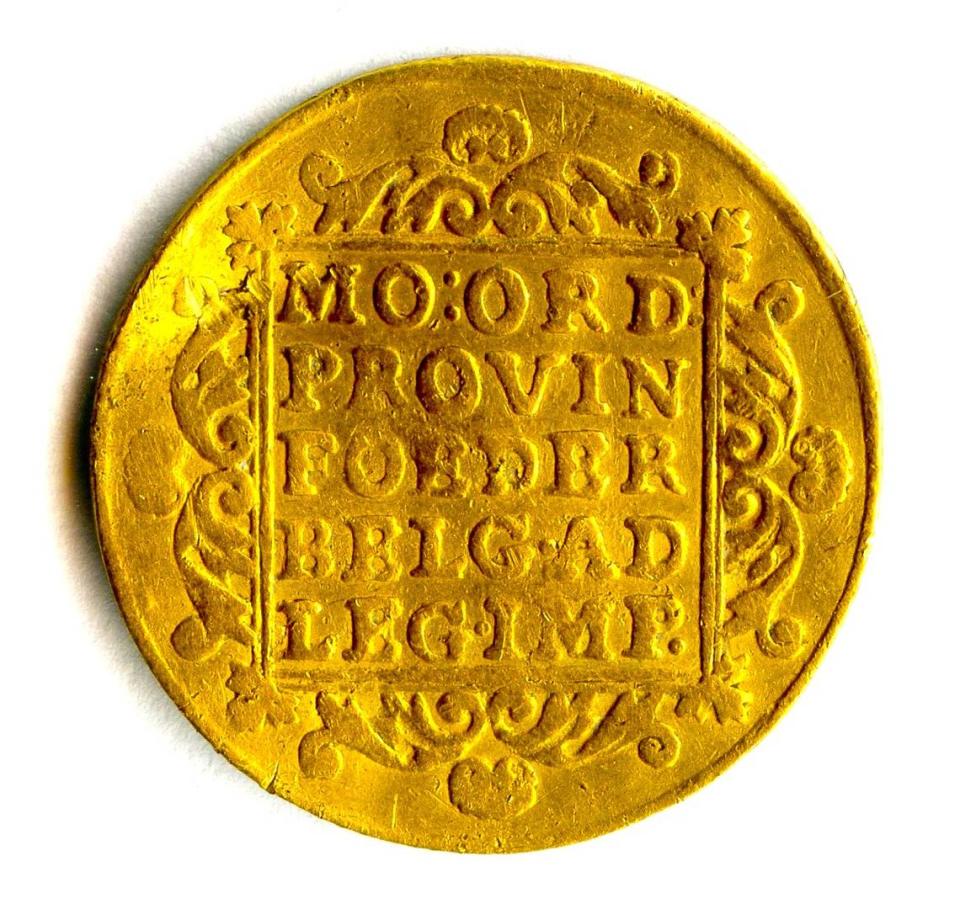247-year-old lost gold coin — from defunct republic — discovered by metal detectorist
A man recently stumbled upon a rare gold coin — with obscure origins — in the far north of Poland.
Polish resident Maciej Ruzik encountered the piece while metal detecting on a street in Kamien Pomorski, a town along the Baltic Sea, in early February.
Upon making the discovery, he felt his whole body shake, according to a Feb. 5 news release from the Museum of the History of the Kamień Land.

The coin, it turned out, was a golden ducat minted in 1777 in the Dutch Republic, a long defunct confederation of northern European states.
Golden ducats, which first came into circulation in Venice, were important in international trade during the early modern era, according to the Royal Dutch Mint.
“Their reputation was strong because of their dependable content and weight,” according to the organization. “The Dutch Golden Ducat therefore became one of the most important trade coins in the world.”
Measuring less than an inch wide, the newfound ducat features a knight standing with a sword and bundle of arrows, photos show.
Inscribed alongside the knight is the year 1777 and the phrase: “PAR(VAE)/ CRES(CUNT)/CONCORDIA/RES,” which is believed to mean: In harmony even from small things great grow.
On the reverse side of the ducat, an inscription reads: “MO:ORD PROVIN FOEDER/BELG AD LEG IMP.” It roughly translates to: The coin originated in the province of Belgium according to the laws of the empire.
Modern-day Belgium and Luxembourg, in addition to the Netherlands were incorporated into the Dutch Republic, which lasted from 1581 until 1795.
It collapsed following a French invasion in 1795, which forced William V, the republic’s leader, into exile, according to the Dutch government.
The coin’s discovery is certainly unique as it is the first of its kind to be found, Grzegorz Kurka, the museum director, said in a news release from Science in Poland.
How it wound up in Poland — hundreds of miles away from its point of origin — remains a mystery, he said.
What’s clear, though, is that its loss undoubtedly marked a great setback for its owner, Kurka said.
Facebook Translate was used to translate the news release from the Museum of the History of the Kamień Land, and Google Translate was used to translate the post from Science in Poland.
Abandoned well hid 1,700-year-old government records. See ancient finds from China
Ancient urn — still holding 2,500-year-old remains — unearthed during road construction
5,000-year-old human shelter — with bones and blades — discovered in Armenia. See it

